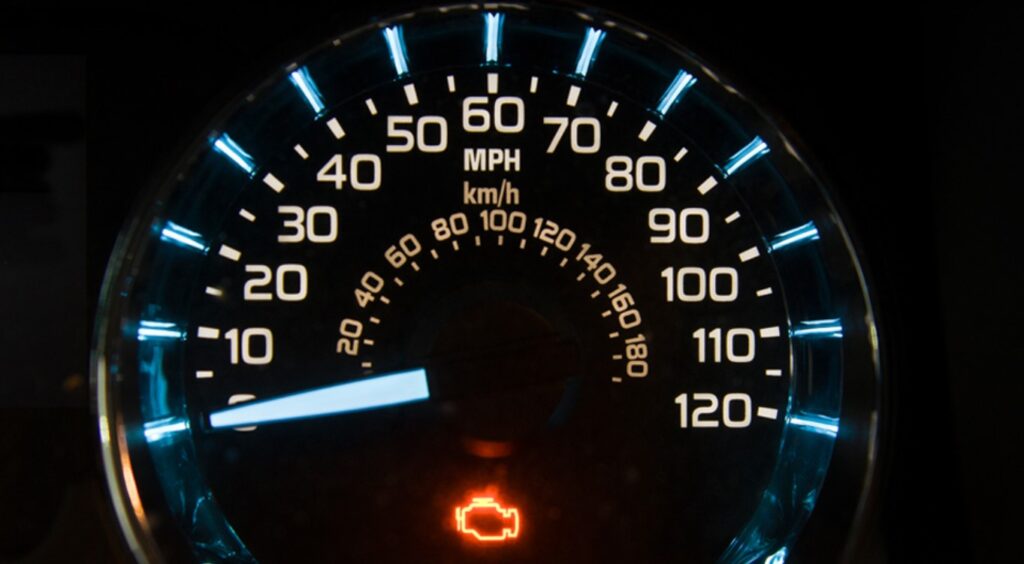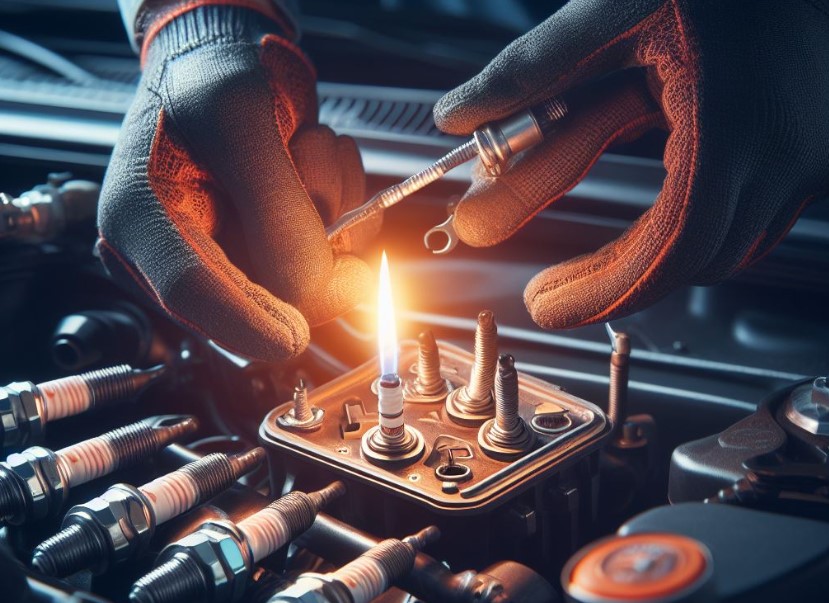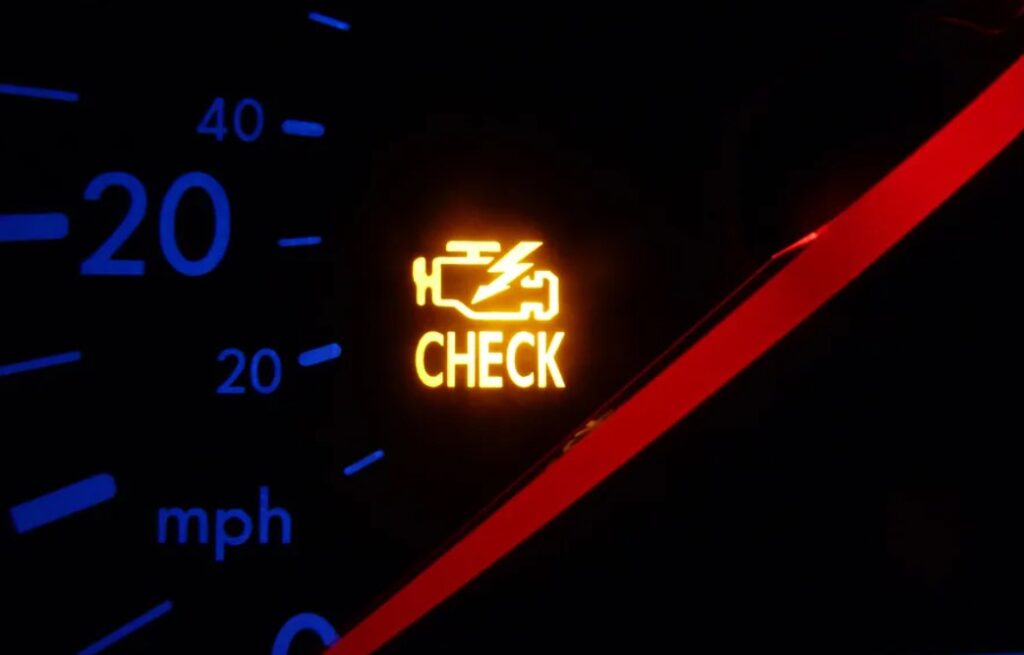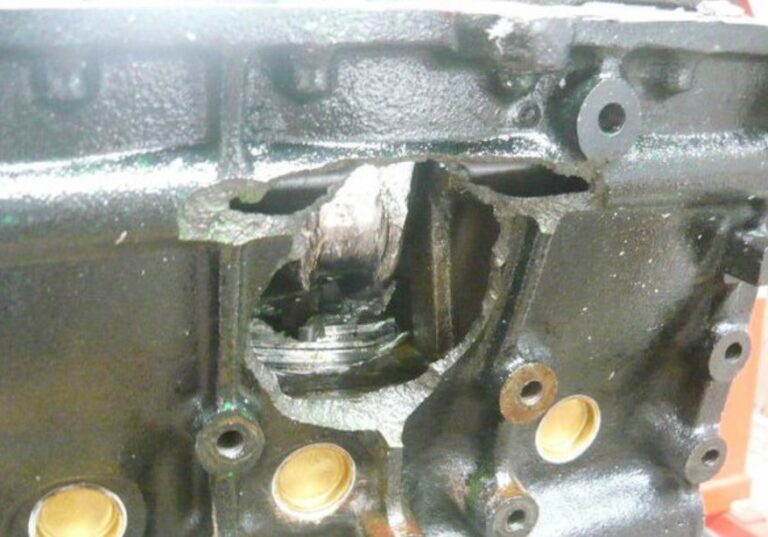How To Reset Check Engine Light After Changing Spark Plugs?
This article will explain How To Reset Check Engine Light After Changing Spark Plugs? Resetting the check engine light after changing the spark plugs is a crucial step in car maintenance. It ensures that your vehicle’s computer system accurately reflects the changes you’ve made.
This process, while straightforward, can vary slightly depending on your car model. However, the general steps remain the same. Understanding these steps not only enhances your vehicle’s performance but also extends the life of the new spark plugs.
Key Takeaways
- Resetting the check engine light after a spark plug change is vital for accurate vehicle diagnostics.
- The process can vary by car model but generally involves a few standard steps.
- Proper resetting aids in optimal vehicle performance and longevity of the new spark plugs.
How To Reset Check Engine Light After Changing Spark Plugs?
Resetting the check engine light after changing the spark plugs can be a necessary step to ensure that your vehicle’s diagnostic system is up-to-date with the recent maintenance. Here’s a detailed guide on how to reset the check engine light:

1. Verify Spark Plug Installation
- Ensure Correct Installation: Before attempting to reset the check engine light, make sure that the spark plugs have been installed correctly. This includes checking that they are the right type for your vehicle, properly gapped, and securely fastened.
2. Disconnect the Battery
- Locate the Battery: Open your vehicle’s hood and locate the battery.
- Safety Precautions: Ensure the car is turned off. Wear safety gloves and goggles if available.
- Disconnect the Negative Terminal: Use a wrench to loosen the nut on the negative terminal of the battery. Carefully disconnect the negative cable.
- Wait: Leave the cable disconnected for about 15 minutes. This waiting period allows the vehicle’s computer system to reset.
- Reconnect the Negative Terminal: Reattach the negative cable and tighten the nut securely.
3. Use an OBD-II Scanner
- Connect the Scanner: Locate the On-Board Diagnostics II (OBD-II) port in your vehicle, usually found under the dashboard. Plug in your OBD-II scanner.
- Turn on the Ignition: Switch your vehicle to the ON position, but do not start the engine.
- Follow Scanner Instructions: Use the scanner to navigate to the trouble codes section. The scanner will display any error codes that have been logged.
- Clear the Codes: Select the option to clear or reset the codes. This should turn off the check engine light.
- Disconnect the Scanner: Safely remove the scanner from the OBD-II port.
4. Allow the System to Reset Naturally
- Drive the Vehicle: If you don’t have access to an OBD-II scanner and prefer not to disconnect the battery, you can simply drive your vehicle as usual.
- Complete Several Drive Cycles: It may take several driving cycles (starting the car, driving, and turning it off) for the ECU to reset the check engine light. This could take a few days depending on your driving habits.
5. Check for Recurrence
- Monitor the Check Engine Light: After resetting, monitor the check engine light over the next few days of driving.
- Persistent Light: If the light comes back on, there may be additional issues that need addressing.
6. Seek Professional Assistance
- Professional Diagnosis: If you’re unable to reset the light or if it reappears, it may be time to seek professional help. A certified mechanic can perform a more thorough diagnosis and address any underlying issues.
Resetting the Check Engine Light
Resetting the check engine light after a spark plug change is essential. You can do this by disconnecting the battery, using an OBD-II scanner, or allowing the car’s system to reset naturally over time. Each method has its own pros and cons and may be more suitable depending on your car’s make and model.
Disconnecting the Battery
- Turn off your vehicle and ensure it’s in a safe location.
- Locate the battery and disconnect the negative terminal.
- Wait for about 15 minutes before reconnecting it.
- This process resets the car’s computer system.
Using an OBD-II Scanner
- Connect the OBD-II scanner to your vehicle’s diagnostic port.
- Follow the scanner’s instructions to clear the check engine light.
- This method is precise and avoids disrupting other system settings.
Natural System Reset
- Drive your car for a few days.
- The system may automatically recognize the new spark plugs and reset the light.
Importance of Spark Plug Maintenance
Maintaining your vehicle’s spark plugs is crucial. They play a significant role in the combustion process and overall engine health. Regular checks and timely replacement of spark plugs can prevent many engine-related issues.

Signs of Worn Spark Plugs
- Engine misfiring or rough idling.
- Reduced fuel efficiency.
- Difficulty in starting the engine.
Benefits of Timely Spark Plug Replacement
- Improved engine performance and fuel efficiency.
- Reduced harmful emissions.
- Prevents larger and more costly engine issues.
Understanding Check Engine Light Codes
When your check engine light comes on, it’s essential to understand the codes displayed by an OBD-II scanner. These codes help diagnose issues beyond just spark plug problems.
Interpreting Common Codes
- Codes like P0300 to P0308 often indicate misfires which can be related to spark plugs.
- P0420 indicates a problem with the catalytic converter, which can be influenced by faulty spark plugs.
The Role of Spark Plugs in Engine Codes
- Worn spark plugs can cause misfires, leading to various engine codes.
- Regular spark plug maintenance can prevent these issues and keep the engine running smoothly.
When to Seek Professional Help?
Sometimes, resetting the check engine light or diagnosing engine problems requires professional expertise. If the light persists or other engine issues arise, it’s best to consult a mechanic.
Identifying Complex Issues
- Persistent check engine light after reset attempts.
- Engine performance issues even after changing spark plugs.
Benefits of Professional Diagnosis
- Accurate identification of underlying issues.
- Proper and safe resolution of complex engine problems.
Preventive Measures for Spark Plug Longevity
Taking preventive measures can extend the life of your spark plugs and avoid premature wear.

Regular Vehicle Maintenance
- Regular oil changes and air filter replacements.
- Keeping up with scheduled service intervals.
Driving Habits
- Avoiding short trips that prevent the engine from reaching optimal temperatures.
- Smooth acceleration and deceleration.
Selecting the Right Spark Plugs for Your Vehicle
Choosing the correct spark plugs for your vehicle is critical for optimal engine performance. The wrong type can lead to inefficiencies and might even trigger the check engine light.
Factors to Consider When Choosing Spark Plugs
- Vehicle Manufacturer’s Specifications: Always refer to your vehicle’s manual for the recommended spark plug type and gap setting.
- Spark Plug Material: Options include copper, platinum, and iridium, each with different longevity and performance characteristics.
- Engine Compatibility: Ensure the spark plugs are compatible with your engine’s design and performance requirements.
Impact of Wrong Spark Plug Selection
- Using the incorrect spark plugs can lead to poor fuel economy and reduced engine performance.
- Incorrect gap settings or incompatible materials can cause misfires, leading to the check engine light being triggered.
Steps After Resetting the Check Engine Light
Once you’ve reset the check engine light, there are important steps to ensure everything is functioning correctly.
Post-Reset Engine Check
- Monitor Engine Performance: Pay attention to the engine’s behavior. Any unusual sounds, vibrations, or performance drops might indicate an unresolved issue.
- Check for Recurrence: If the check engine light comes back on, it suggests there might be additional issues to address.
Importance of a Test Drive
- A test drive allows you to assess the engine’s performance in real-world conditions.
- It helps in verifying if the reset was successful and if the new spark plugs are functioning properly.
Handling Recurrent Check Engine Lights
If the check engine light reappears after a reset, it indicates deeper issues that need addressing.

Diagnostic Steps for Recurring Issues
- Use an OBD-II Scanner Again: Check for new codes that might have triggered the light.
- Inspect Other Components: Sometimes, the issue might not be with the spark plugs but with related components like ignition coils or fuel injectors.
Seeking Professional Help
- Persistent issues warrant a visit to a professional mechanic.
- They can provide a comprehensive diagnostic and resolve complex issues that are beyond basic troubleshooting.
Long-Term Maintenance Tips
Maintaining your vehicle regularly can prevent issues related to spark plugs and the check engine light.
Routine Engine Maintenance
- Regularly check and clean your spark plugs as part of your vehicle’s maintenance routine.
- Ensure timely replacement of other ignition system components to prevent undue stress on the spark plugs.
Importance of Following the Maintenance Schedule
- Adhering to your vehicle’s maintenance schedule helps in the early detection of potential issues.
- It ensures that all components, including spark plugs, function optimally and last longer.
How Long Does It Take For Check Engine Light To Go Off After Replacing Spark Plugs?
After replacing spark plugs, the time it takes for the check engine light to go off can vary based on several factors. In some vehicles, the check engine light may reset immediately after the issue is resolved – in this case, after the spark plugs are properly replaced.

However, in other cases, the vehicle’s computer system may require a few driving cycles to recognize the repair and reset the light. A driving cycle typically involves starting the engine, driving the vehicle, and turning it off. This process can take anywhere from a few days to a week, depending on your driving habits.
It’s important to note that if the check engine light remains on after several driving cycles, there may be additional issues beyond the spark plugs that need to be addressed. In such cases, using an OBD-II scanner can provide specific diagnostic codes that help identify other potential problems.
Do You Need To Reset Anything After Changing Spark Plugs?
Typically, there is no need to manually reset anything in your vehicle after changing the spark plugs. The vehicle’s engine control unit (ECU) is designed to automatically adjust to changes and improvements, such as new spark plugs.

When you replace spark plugs, the ECU will gradually adapt to the changes in engine performance and efficiency. However, if the check engine light was on due to an issue related to the spark plugs, it might be necessary to reset the light to clear any diagnostic trouble codes stored in the ECU.
In some instances, vehicle owners choose to manually reset the check engine light either by using an OBD-II scanner or by disconnecting the car battery for a short period.
This manual reset can immediately clear any lingering codes, but it’s generally recommended only if the light doesn’t turn off automatically after a few driving cycles. It’s important to ensure that the spark plugs are correctly installed and functioning before attempting a reset, as unresolved issues might still trigger the light.
Why Is My Check Engine Light Blinking After Changing Spark Plugs?
If your check engine light is blinking after changing spark plugs, it typically indicates a more serious issue, often related to engine misfires. A blinking or flashing check engine light is generally considered an urgent warning, as opposed to a steadily illuminated light which suggests a less immediate concern. Common reasons for a blinking check engine light after changing spark plugs include:

- Incorrect Installation: If the spark plugs are not properly installed, it can lead to misfires. This includes incorrect tightening or incorrect gap settings.
- Wrong Spark Plug Type: Using spark plugs that are not suited for your vehicle’s specific engine can cause misfires and poor engine performance.
- Damaged Spark Plugs: If the new spark plugs are cracked or otherwise damaged during installation, they may not function correctly.
- Related Engine Issues: Other issues, such as problems with ignition coils, fuel injectors, or catalytic converters, might also trigger a blinking light.
It’s crucial to address a blinking check engine light promptly, as continuous misfires can damage the catalytic converter, which is an expensive component to replace. Diagnosing the issue with an OBD-II scanner can provide more specific insights into the problem.
How Do You Reset The Check Engine Light?
Resetting the check engine light can be done in several ways, depending on the tools available and the specific vehicle. Here are the most common methods:

- Using an OBD-II Scanner:
- This is the most straightforward and precise method. Connect the scanner to the vehicle’s OBD port, usually located under the dashboard.
- Follow the scanner’s prompts to find and clear the stored error codes. This action should reset the check engine light.
- Disconnecting the Car Battery:
- Turn off the vehicle and ensure it’s in a safe and stable position.
- Disconnect the negative battery terminal and wait for about 15 minutes. This process resets the car’s computer, along with the check engine light.
- Reconnect the battery terminal. Note that this method might reset other vehicle settings, like the radio or clock.
- Driving Until It Clears:
- In some cases, if the issue that triggered the light is resolved (like replacing faulty spark plugs), the light may turn off after several driving cycles as the ECU re-evaluates the vehicle’s status.
It’s important to ensure that the underlying issue causing the check engine light is properly addressed before attempting a reset. Resetting the light without fixing the problem will only result in the light coming back on after some time.
Conclusion
Resetting the check engine light after changing the spark plugs is a pivotal aspect of vehicle maintenance. It ensures that your car’s computer system accurately reflects the changes made.
By following the correct procedures and understanding the importance of spark plug maintenance, you can enhance your vehicle’s performance and extend the life of the new spark plugs. Remember, if the light persists or if you’re unsure, seeking professional help is always a wise decision.
People Also Ask
Why does my check engine light stay on after changing the spark plugs?
The check engine light might stay on if the spark plugs were not installed correctly or if there are other underlying engine issues. It’s important to ensure that the spark plugs are of the correct type and properly gapped. If the light persists, a professional diagnostic is recommended.
Can I reset the check engine light without a scanner?
Yes, you can reset the check engine light by disconnecting the battery or allowing the car’s system to reset over time. However, using a scanner is the most straightforward and accurate method.
Should I replace all spark plugs at once if one is causing the check engine light to come on?
It’s usually recommended to replace all spark plugs at once for consistent performance and to prevent similar issues with other spark plugs in the near future.
Can a disconnected battery reset the check engine light effectively?
Disconnecting the battery can reset the check engine light, but it’s a temporary solution. It might not address the root cause of the problem and can reset other vehicle settings.

Welcome to the exhilarating world of Matt Rex, a professional car racer turned renowned vehicle enthusiast. Immerse yourself in his captivating blog as he shares heart-pounding adventures, expert reviews, and valuable insights on cars, trucks, jets, and more. Fuel your passion for speed and discover the beauty of vehicles through Matt’s engaging stories and meticulous expertise. Join the ever-growing community of enthusiasts who find inspiration and expert advice in Matt Rex’s blog—a digital hub where the thrill of speed meets the pursuit of knowledge.







